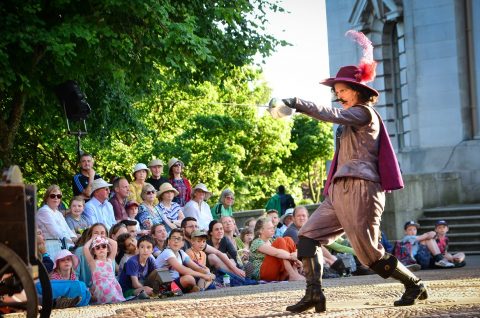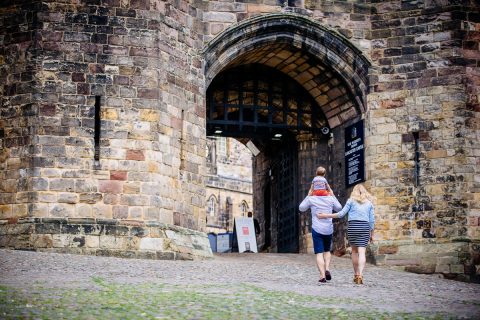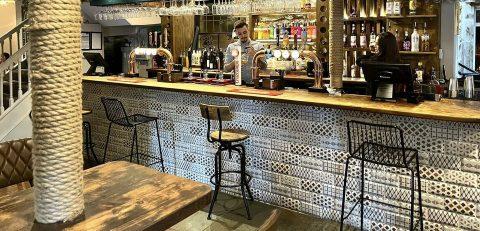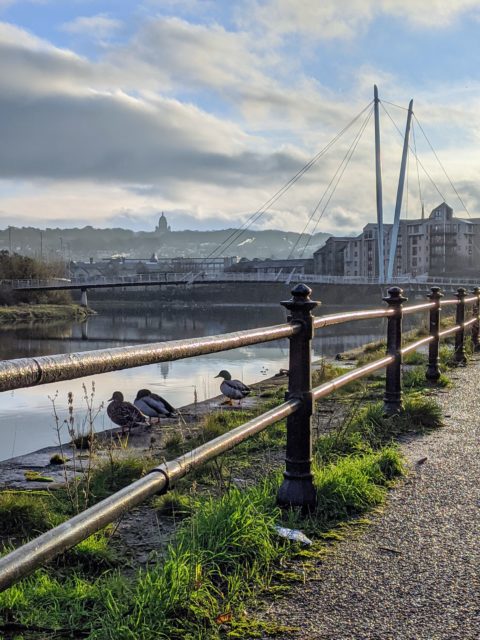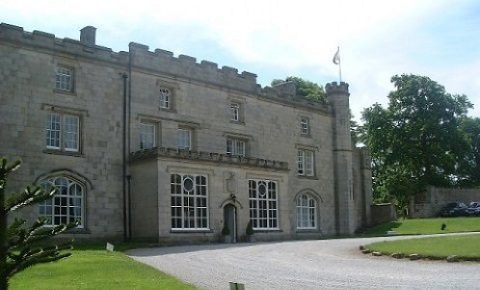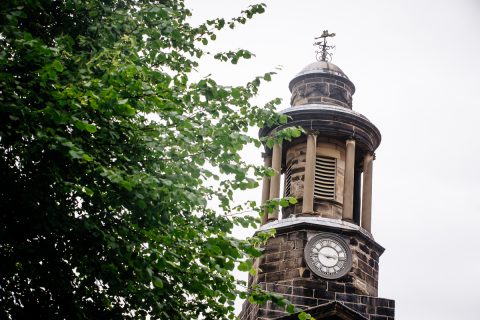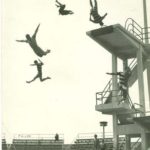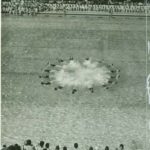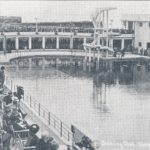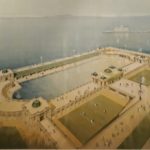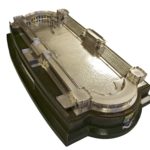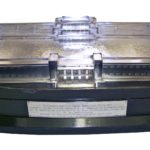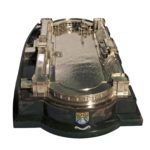Model of the Morecambe Super Swimming Stadium
 | Morecambe’s Super Swimming Stadium was, without exception, one of the grandest of the 1930s modernist seaside lidos. The enormous structure (measuring 396ft. by 110ft.) was reputed to be the largest outdoor pool in Europe when it opened in 1936 at a cost of £185,000 (over £13million today). It could accommodate 1200 bathers and 3000 spectators! This beautiful silver model belongs to the Lancaster City Museum collection and celebrates the opening of this most spectacular of lidos. |
HISTORY OF THE STADIUM
Generally, inter-war lidos were designed ‘in-house’ by council engineers, but Morecambe’s was designed by prominent architects, Kenneth MB Cross and Cecil Sutton. It was styled to harmonise with the adjacent Midland Hotel.
The Super Swimming Stadium was intended to outdo Blackpool’s neo-classical South Shore Swimming Coliseum. It was built on the site of a shipbreaking yard – where holidaymakers used to pay 3d for tours of condemned ocean liners – the complex comprised a championship swimming course, water polo area, diving stage, artificial beach for sunbathing, three-deck promenade, two grandstands, a sun terrace, floodlights, a cafe and changing rooms.
Described as the-
“ultimate architectural expression of early twentieth-century attitudes towards health and leisure”
It was opened by the governor of the Bank of England Sir Josiah Stamp on 27 July 1936 – just days before the Berlin Olympics. Stamp said-
“bathing reduces rich and poor, high and low, to a common standard of enjoyment and health. When we get down to swimming, we get down to democracy”.
At its peak, the stadium is said to have had around 27,000 swimmers over two days and following the end of the Second World War, the building hosted national and international swimming and aquatic events as well as the Miss Great Britain and Miss World beauty contests.
DECLINE AND DEMOLITION
Although the Super Swimming Stadium was a success, it was not without shortcomings. The stadium tended to be extremely cold as it did not have a roof, and let’s face it Morecambe can be pretty chilly, even in summer. There was a leak in the sea wall which caused seawater to flow in and out with the tide. After years of decline and increasing repair and maintenance costs the stadium was closed down in 1975, on grounds of structural problems and demolished just a year later.
Here are more objects from our collection, which are linked to the spectacular Super Swimming Stadium. They show the Aqua Lovelies, Aqua Loonies and Aqua Cascades entertainment troupes, as well as our beautiful model of the stadium.


